Scientists Successfully Couple 2D Ferromagnetic Materials at Room Temperature: Imagine a world where your smartphone is faster, your computer uses less energy, and new gadgets we can’t even dream of today become possible—all thanks to a new kind of material just a few atoms thick. That’s the promise of 2D ferromagnetic materials, and recent breakthroughs show we’re closer than ever to making this a reality.
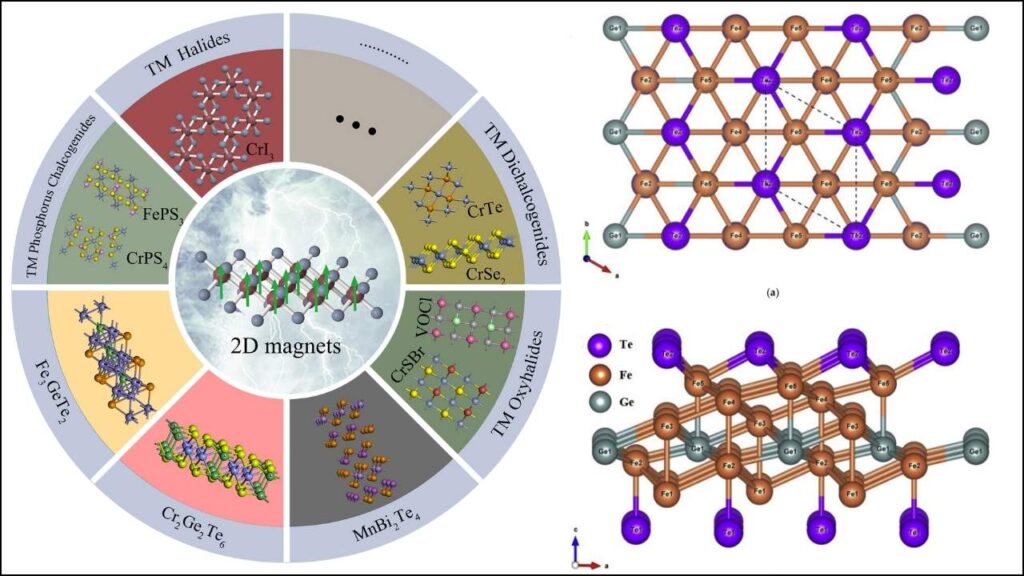
Scientists have made history by successfully coupling 2D ferromagnetic materials at room temperature. This means they can control both electricity and magnetism at the atomic scale in ultra-thin materials, something previously thought impossible outside of extreme cold. The discovery, led by researchers at National Taiwan University, centers on a material called Fe₅GeTe₂ (iron-germanium-telluride), which keeps its magnetic properties even at everyday temperatures. This opens the door to a new era of electronics, memory, and even quantum computing.
Scientists Successfully Couple 2D Ferromagnetic Materials at Room Temperature
| Feature | Details |
|---|---|
| Material | Fe₅GeTe₂ (iron-germanium-telluride) |
| Key Breakthrough | Atomic-scale coupling of charge, spin, and many-body effects at room temperature |
| Main Application | Next-generation electronics, spintronics, memory, quantum devices |
| Temperature Stability | Stable magnetic properties at and above room temperature (up to 100°C/390K in some cases) |
| Professional Impact | New careers in materials science, nanotechnology, spintronics, quantum engineering |
| Official Reference | Nature Communications, National Taiwan University |
The successful coupling of 2D ferromagnetic materials at room temperature is a game-changer for electronics, memory, and quantum technology. By making magnetism and electricity work together at the atomic scale, scientists are opening the door to faster, more efficient, and more flexible devices. This breakthrough is not just a win for science—it’s a win for everyone who uses technology in their daily lives.
What Are 2D Ferromagnetic Materials?
2D ferromagnetic materials are ultra-thin sheets—just one or a few atoms thick—that can be magnetized and remain magnetic at room temperature. Unlike traditional magnets, which are usually bulky and require special conditions to work, these materials are light, flexible, and can be easily integrated into electronic devices.
Why is this important?
Most magnets lose their magnetic properties when they get too hot or too thin. But 2D ferromagnets keep their magnetism even at everyday temperatures and in very thin layers. This makes them perfect for modern electronics, where smaller, faster, and more energy-efficient devices are always in demand.
The Science Behind the Breakthrough
Scientists at National Taiwan University used a special tool called a scanning tunneling microscope (STM) to look at the atoms in Fe₅GeTe₂.
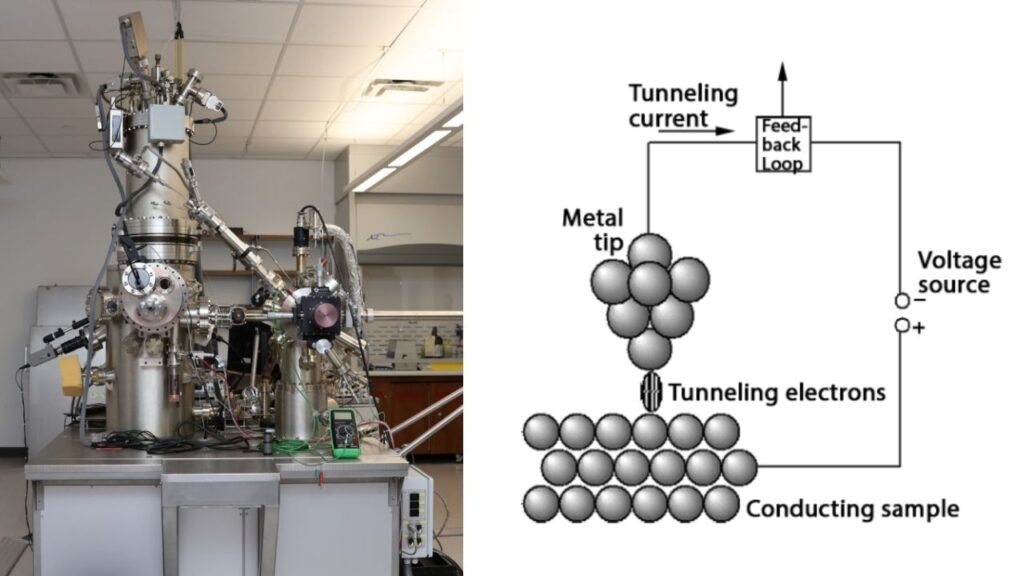
They discovered something amazing: the electrons in this material do two jobs at once—they help with both electricity and magnetism. Normally, these jobs are separate, but in Fe₅GeTe₂, they work together in harmony.
They saw three things happening at the same time:
- Charge density waves (CDWs): Patterns in how electrons are arranged.
- The Kondo effect: A special way electrons interact with each other.
- Ferromagnetism: The material stays magnetic even when it’s very thin.
Even more exciting, these effects weren’t just happening randomly—they were synchronized into a pattern called a √3 × √3 superlattice. This means the electrons and spins (tiny magnets inside atoms) are organized in a special way, making the material’s behavior predictable and controllable.
Why Room Temperature Matters
Most advanced magnetic materials only work at very low temperatures, like those found in laboratories using liquid helium or nitrogen. That makes them expensive and impractical for everyday use. Room temperature means the material works at the same temperature as your home, office, or car—no special cooling needed.
This is a huge deal for the electronics industry. It means we can put powerful magnets and memory into phones, computers, and even wearable devices without worrying about overheating or extra cooling systems.
Practical Applications: What Can We Do With 2D Ferromagnets?
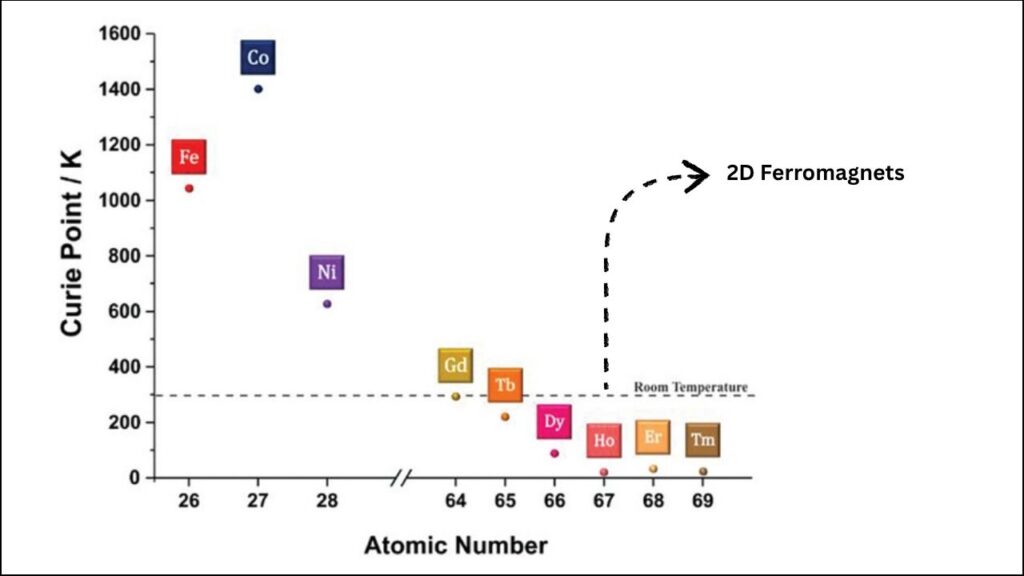
1. Faster, More Efficient Electronics
By combining electricity and magnetism at the atomic level, we can make devices that process information faster and use less energy. This could lead to longer battery life and more powerful gadgets.
2. Advanced Memory Storage
2D ferromagnets could be used to make new kinds of memory chips that store more data in less space. This is important for everything from smartphones to supercomputers.
3. Quantum Computing
Quantum computers need materials that can control tiny particles called qubits. 2D ferromagnets could help make these qubits more stable and easier to control, bringing us closer to practical quantum computers.
4. Flexible and Wearable Tech
Because these materials are so thin and flexible, they can be used in bendable screens, smart clothing, and even medical devices that stick to your skin.
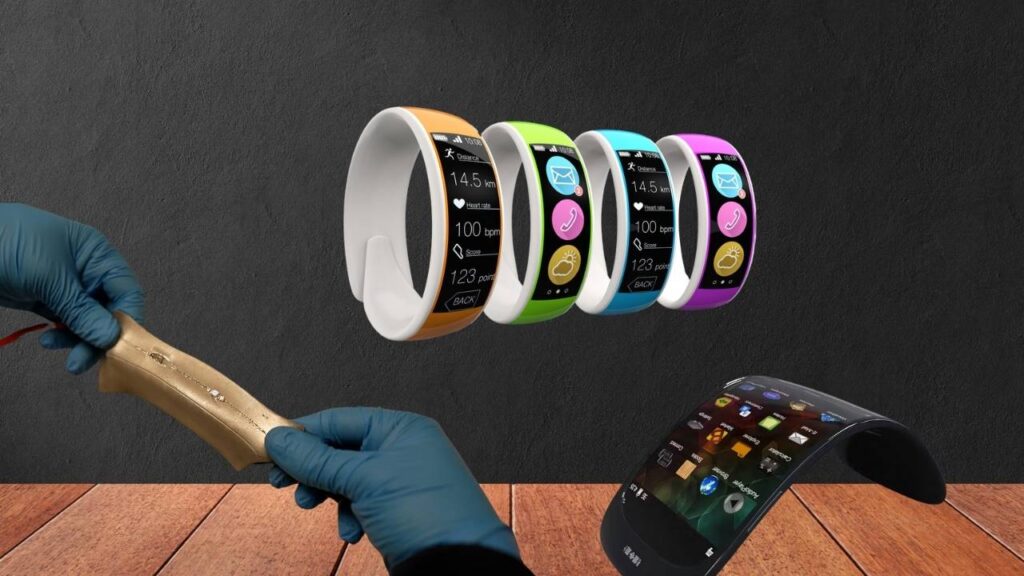
How Scientists Made This Happen
Let’s break down the steps scientists took to achieve this breakthrough:
- Choose the Right Material
Researchers picked Fe₅GeTe₂ because it was already known to be magnetic at room temperature. - Cut It Down to Size
They made the material into ultra-thin sheets, just a few atoms thick. - Look Closely at the Atoms
Using a scanning tunneling microscope, they looked at how the electrons and spins were arranged. - Find the Patterns
They discovered that the electrons, spins, and other effects were all organized into a special pattern. - Test at Room Temperature
They made sure the material still worked at everyday temperatures, not just in extreme cold.
Other Exciting 2D Magnetic Materials
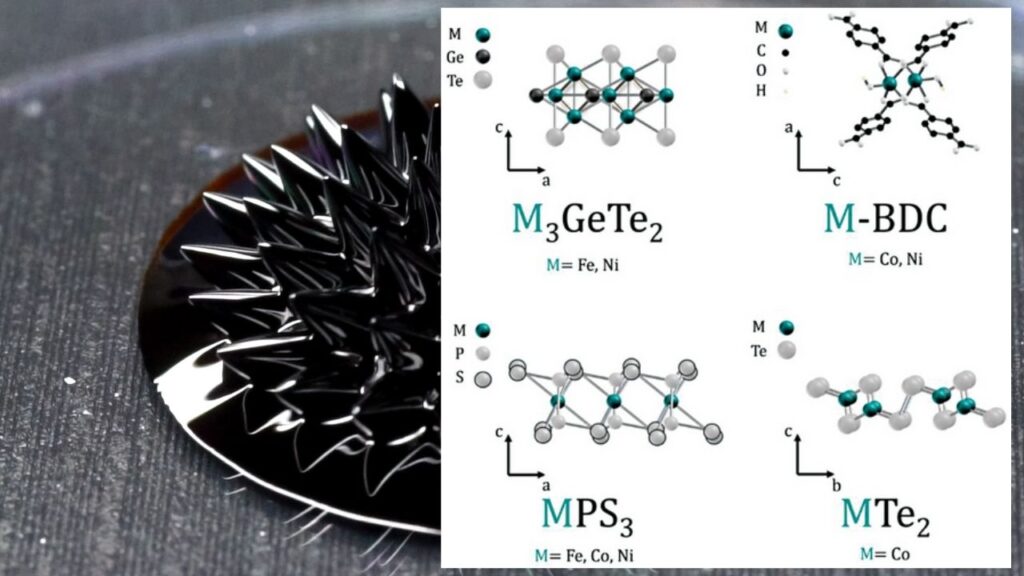
Fe₅GeTe₂ isn’t the only star in the world of 2D magnets. Other materials, like Fe₃GaTe₂ and cobalt ferrite nanosheets, also show strong magnetism at or above room temperature. Some of these materials can even stay magnetic at temperatures higher than boiling water!
Scientists are also exploring van der Waals heterostructures, where different 2D materials are stacked together like a sandwich. This allows them to create new properties and functions that aren’t possible with a single material.
Career and Professional Opportunities
The rise of 2D ferromagnetic materials is creating new jobs and career paths in science and engineering. Here are some roles that are becoming more important:
- Materials Scientist: Designs and tests new materials like Fe₅GeTe₂.
- Nanotechnologist: Works with ultra-thin materials to build new devices.
- Spintronics Engineer: Develops electronics that use both electricity and magnetism.
- Quantum Engineer: Works on quantum computers and other advanced technologies.
New Quantum State Discovery Set to Revolutionize Material Science Worldwide
FAQs About Scientists Successfully Couple 2D Ferromagnetic Materials at Room Temperature
Q: What is a 2D ferromagnetic material?
A: It’s a material that’s just one or a few atoms thick and can be magnetized, even at room temperature.
Q: Why is room temperature important?
A: Most advanced magnetic materials only work at very low temperatures. Room temperature means they can be used in everyday devices without special cooling.
Q: What can we use 2D ferromagnets for?
A: Faster electronics, advanced memory, quantum computers, and flexible or wearable tech.
Q: Are there other materials like Fe₅GeTe₂?
A: Yes, materials like Fe₃GaTe₂ and cobalt ferrite nanosheets also show strong magnetism at or above room temperature.
Q: How do scientists study these materials?
A: They use special microscopes, like the scanning tunneling microscope, to look at the atoms and electrons.
Q: What kind of jobs are available in this field?
A: Materials science, nanotechnology, spintronics, and quantum engineering are all growing areas.






